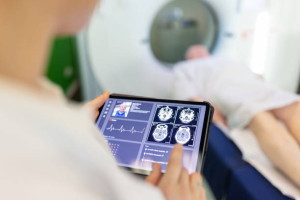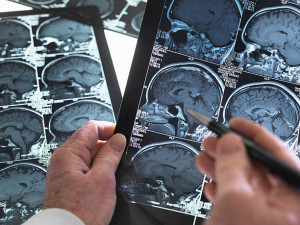Treatments
 Our comprehensive stroke care center is dedicated to providing rapid, expert diagnosis, advanced treatment, and personalized recovery plans for patients experiencing stroke symptoms.
Our comprehensive stroke care center is dedicated to providing rapid, expert diagnosis, advanced treatment, and personalized recovery plans for patients experiencing stroke symptoms.
Acute stroke treatment
Intravenous thrombolytic therapy: Thrombolytic agents, or clot busters, are used to treat an ongoing acute ischemic stroke caused by an artery blockage. These agents dissolve the blood clot that is blocking blood flow to the brain. Clot-busting medications can be administered intravenously to patients who meet strict criteria and arrive to the Emergency Department in time to allow the medication to be given within 4.5 hours of onset of stroke symptoms.
Endovascular stroke treatment
Interventional radiologists have an ever-growing impact on the field of stroke, performing new endovascular procedures to prevent, diagnose and treat neurovascular diseases and disorders. St. Mary’s offers minimally invasive procedures for stroke, aneurysm, intracranial bleeding and blockages. Interventional radiologists are an important part of St. Mary’s Stroke Center. Physicians are available 24 hours a day, seven days a week.
Intra-arterial thrombolysis: Interventional radiologists administer a small amount of a “clot-busting” drug directly into the artery at the site of the blood clot that is causing the stroke. A small catheter is inserted into the artery at the groin and threaded to an artery in the brain. This procedure is used to treat strokes caused by a blood clot that is blocking flow of blood through an artery in the brain.
Mechanical Thrombectomy: A device is navigated into the brain's arteries using standard catheterization techniques. Upon reaching the targeted area in the brain, the clot retriever is designed to restore blood flow by engaging, capturing and removing the blood clot. Special suction tubes may also be used to remove the clot.
Intracranial angioplasty: Bleeding in the brain can cause spasms in blood vessels and block blood flow. In intracranial angioplasty, a neuro-interventional radiologist (an interventional radiologist with specialized training to perform brain procedures) inserts a catheter into the vessel and inflates a balloon to open the constricted area and restore blood flow. If there is a risk that the balloon might rupture an artery, the physician may administer medications through a catheter that help relax and reopen the artery without using a balloon.
 Cerebral aneurysm treatment
Cerebral aneurysm treatment
A cerebral aneurysm is a weak area in the wall of an artery in the brain. The weakened wall often stretches and swells outward, forming a bubble-shaped area on one side of the vessel. Without treatment, the aneurysm can rupture and bleed.
Cerebral aneurysm coiling: A neuro-interventional radiologist inserts a catheter into the artery and threads it into the aneurysm. Fine platinum coils are inserted into the aneurysm to cause a blood clot to form, which seals off the aneurysm. Metal stents may be used to keep the coils in place.
Clipping: A neurosurgeon performs a craniotomy and locates the aneurysm in the brain. A tiny metal clip is placed across the neck of the aneurysm to stop blood flow into the aneurysm and prevent it from rupturing.
